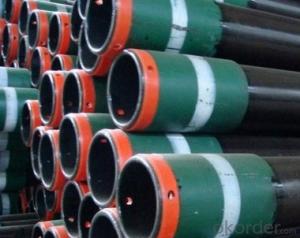Rebar, short for reinforcing bar, is a critical component in modern construction. It’s a steel bar that is embedded within concrete to provide structural integrity and strength. But why is it so important? Let’s dive into the world of rebar and concrete to find out.
The Backbone of Buildings
Rebar acts as the backbone of many buildings and structures. It’s like the skeleton that holds everything together. Without it, concrete would be weak and prone to cracking or breaking under stress. But with rebar, the combination of steel and concrete creates a strong and durable material that can support the weight of a building and withstand various forces.
How Rebar Works with Concrete
The process of using rebar in concrete is quite fascinating. When concrete is poured, the rebar is placed within it. As the concrete dries, it adheres to the rebar, creating a bond that is incredibly strong. This bond allows the rebar to distribute the load evenly throughout the structure, preventing the concrete from cracking or breaking.
The Role of Rebar in Different Structures
Rebar is used in a variety of structures, from residential homes to skyscrapers. It’s essential for the stability and safety of these buildings. In bridges, for example, rebar helps to support the weight of the structure and the traffic that passes over it. In high-rise buildings, it’s used to support the immense weight of the building and to resist the forces of wind and earthquakes.
The Importance of Quality Rebar
Not all rebar is created equal. The quality of the rebar used in a construction project can greatly affect the durability and safety of the structure. High-quality rebar is made from strong steel that can withstand the test of time and the elements. Poor quality rebar, on the other hand, can lead to structural failures and even catastrophic collapses.
The Future of Rebar in Construction
As construction techniques and materials continue to evolve, so does the use of rebar. New technologies and methods are being developed to improve the strength and efficiency of rebar in concrete structures. This includes the use of advanced materials, coatings, and manufacturing techniques that can enhance the performance of rebar and extend the life of the structures it supports.
The Emotional Connection to Rebar
While rebar may not seem like an emotional topic, it’s actually quite the opposite. For many people, rebar represents the foundation of their homes, schools, and workplaces. It’s a symbol of safety and security, knowing that the structures we inhabit are built to last and withstand the test of time.
The Personal Touch of Rebar
Rebar is not just a material used in construction; it’s also a personal touch in many projects. Architects and engineers often use rebar in creative ways to add a unique flair to their designs. From decorative patterns to structural elements, rebar can be shaped and bent to fit the vision of the designer.
The Art of Rebar Installation
Installing rebar is an art in itself. Skilled workers carefully place and secure each bar, ensuring that it’s positioned correctly and securely. This meticulous attention to detail is what makes each structure built with rebar a masterpiece of engineering and design.
The Challenges of Rebar Use
Despite its many benefits, using rebar in construction also comes with challenges. Corrosion is a common issue, as the steel can react with the concrete and the environment, leading to a weakening of the structure over time. Additionally, the cost of high-quality rebar can be a concern for some projects, as it can add to the overall expense of construction.
The Importance of Proper Rebar Maintenance
To ensure the longevity and safety of structures built with rebar, proper maintenance is essential. Regular inspections and assessments can help identify any potential issues with the rebar, such as corrosion or structural damage, and allow for timely repairs or replacements.
Conclusion
Rebar is an essential component in the construction of durable and safe structures. Its importance cannot be understated, as it plays a critical role in the stability and strength of buildings, bridges, and other structures. By understanding the role of rebar and the factors that contribute to its effectiveness, we can appreciate the true value of this often unsung hero of construction.

